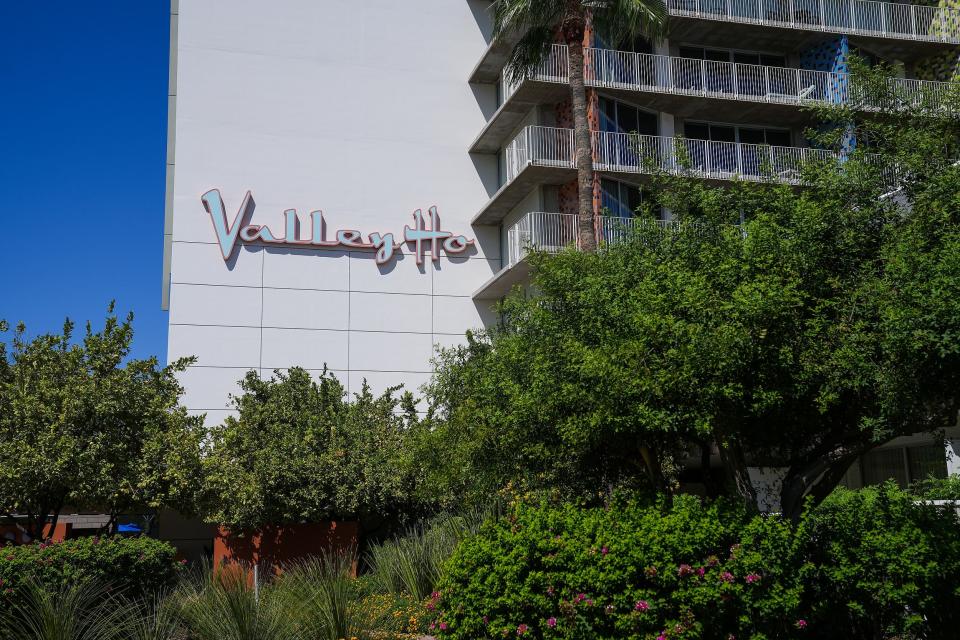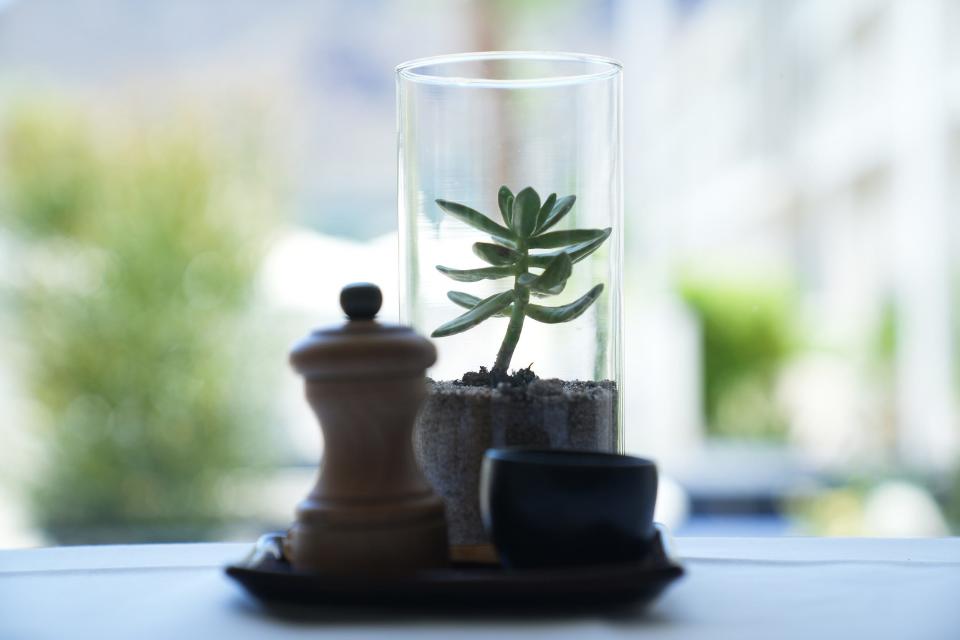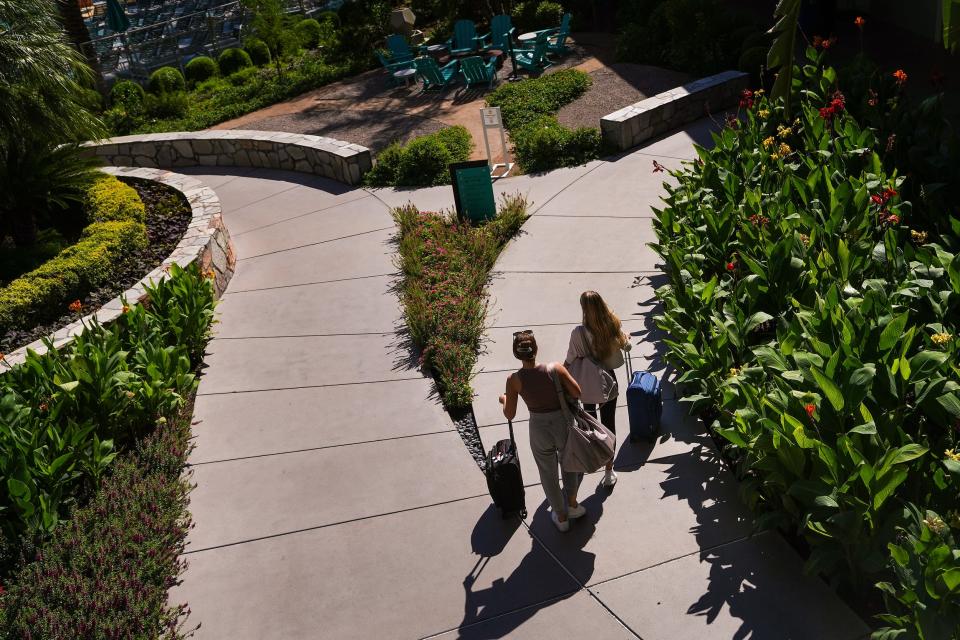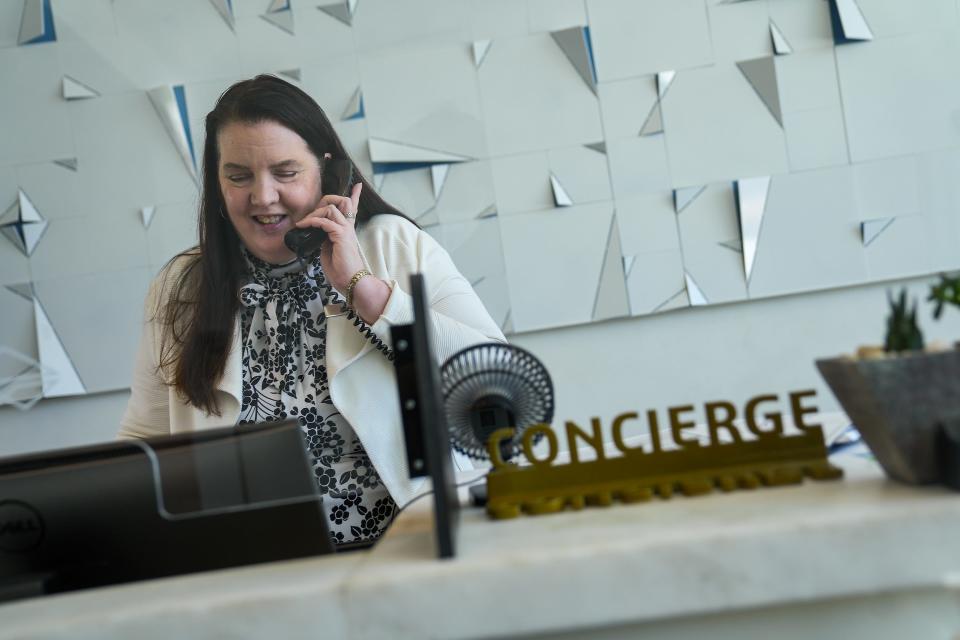The hotel business in Phoenix is booming. Meet the workers making it happen
The Hotel Valley Ho in Scottsdale could be the closest thing to a "Cheers" hotel — the place where everybody knows your name.
Front desk agent Luis Iman and restaurant server trainer Eddie Rodriguez often interact with guests who keep coming back.
"I come to work with a good attitude," Iman said. "I feel very close to my guests and they can see I enjoy what I do and wanting to help in any way."
Personalized service, like workers at the on-site restaurant ZuZu remembering guests' favorite food and drink orders, is part of Hotel Valley Ho's appeal to these returning visitors.
“The little details make a big difference when they come back as regulars,” Rodriguez said. “Maybe you know their beverage preference, like, ‘Welcome back, are we having a triple espresso this morning?’”
Hotel Valley Ho at 65: How sticking with its midcentury roots powered it into the future
How the pandemic has changed the hospitality industry
Hospitality workers' roles in shaping the visitor experience remain vital as people are traveling again following the COVID-19 pandemic erupted.
Arizona's most recent statewide lodging data showed occupancy was about 67% from April to June, with average daily rates of $151.69. That's an increase from 60.8% occupancy and daily rates averaging $120.23 during the same period in 2021, according to the Arizona Office of Tourism.

The state's hotels saw a 12.5% increase in lodging demand during the quarter, even as supply rose by 2.3%, according to AOT.
Regional and statewide tourism growth bolstered the leisure and hospitality workforce in the past decade, including but not limited to hotel jobs.
Arizona counted more than 335,000 leisure and hospitality workers as of July 2022, according to the U.S. Bureau of Labor Statistics. The bulk of these workers — just under 231,000 of them — are employed in the Phoenix metropolitan area.
The state has about 15,000 more hospitality workers than it did in 2017 and about 69,000 more than 2012, and the current employment tally is only slightly below a pre-pandemic high of more than 341,000 workers in February 2020, BLS data showed.
More: Arizona Biltmore closed during the pandemic. Here's what the staff's last day looked like
'Everyone's happy when they come in here'

Among those new workers is Matthew Brake, recently promoted to chef de cuisine at We-Ko-Pa Casino Resort's acclaimed Ember restaurant. Brake previously worked as a line cook at Nisqually Red Wind Casino in Olympia, Washington.
He moved to Arizona in 2019 and found work at We-Ko-Pa, then known as Fort McDowell Casino, where he was a production lead and sushi chef. He became sous chef at Ember when the restaurant opened with We-Ko-Pa's rebranding during the pandemic.
Brake said he feels a "higher purpose of serving and giving back to people" by working in hospitality. He's especially motivated by the excitement he feels when opportunities arise to prepare new recipes.
"Food speaks highly," he said. "It really resonates with people."
Building a strong hospitality workforce depends not only on hiring new workers to keep up with tourism demand, but also retaining existing workers.

We-Ko-Pa's staff includes 35-year veteran Tim Davis, who spent most of his time working the bingo hall. His title is director of bingo.
Davis said he wasn't familiar with bingo before working at We-Ko-Pa. He grew to appreciate the game and found his role rewarding over the years, especially from seeing hundreds of casino guests at a time captivated by the game and anticipating the call of each number.
"You could hear a pin drop," he said. "There's no more gratification than seeing people win money and anticipate their number being called. Everyone's happy when they come in here, because they think they're going to win."
Fort McDowell: How Native Americans changed the gambling industry by standing up to the FBI
'Travelers still want to feel well cared for'
Finding new workers is a greater challenge as the tourism industry nationwide continues grappling with a labor shortage.
The American Hotel and Lodging Association recently forecasted that U.S. hotels will end 2022 with 1.97 million employees, down from the 2.3 million people employed nationwide in 2019.
Hotels aren't expected to reach pre-pandemic employment levels until at least 2024, according to the association. A survey the group published in May found 97% of hotels reported they're experiencing a staffing shortage.
Phoenix hasn't been immune to these challenges.

Jesse Thompson, area director for sales and marketing at Hotel Valley Ho and Mountain Shadows Resort in Paradise Valley, said the staffing challenges at both hotels led management to increase wages and recruit new talent, as well as "ensuring a good work environment for our existing team."
Both hotels were among those that remained open in the early part of the pandemic.
Some hotels in metro Phoenix closed between March and May 2020. Monthly hotel room supply dropped from 3.6 million in March 2020 to 3.1 million in April 2020, a drop of almost 9%, according to the Arizona Office of Tourism, citing research from STR.
The guest experience evolved to fit the circumstances of the pandemic, like requiring masks and more frequent cleaning of common areas.
But the evolution of hospitality jobs from pre-pandemic to the current conditions isn't visible from the guest perspective, Thompson said.
"Travelers still want to feel well cared for, and that the experience they are receiving matches or exceeds their expectations," he said. "It is our job as hoteliers to provide that experience as seamlessly as possible."
Rebound: Arizona tourism roared back in 2021. Here's what that looked like
Why workers find hotel jobs rewarding
Hospitality jobs tend to attract workers who would describe themselves as people persons. They might enjoy the satisfaction of meeting new guests every day, or seeing the smiles on guests' faces when they notice how clean their room looks.
Some came from other jobs looking for a change. Regan Copeland, a concierge at Mountain Shadows Resort, left a teaching job to come to the hotel to help guests plan everything from tours to transportation to spa appointments during their travels.
"It’s the best thing I did in my career," she said. "I cant see myself doing anything else."
Brent Rumph, general manager of Ember restaurant, compared managing a restaurant to a Broadway show, where the play is the same but the actors change.
"I've been doing this for 30 years and people think a manager is just shaking hands (with guests)," he said. "The execution is crucial in fine dining. It’s the little things like a card on the table for an anniversary or a bottle of champagne for the first date."
Upswing: Downtown Phoenix hotels are making a comeback thanks to 2 key factors
Reach the reporter at Michael.Salerno@gannett.com. Follow him on Twitter @salerno_phx.
Support local journalism. Subscribe to azcentral.com today.
This article originally appeared on Arizona Republic: How hospitality workers make Phoenix hotels worth visiting

